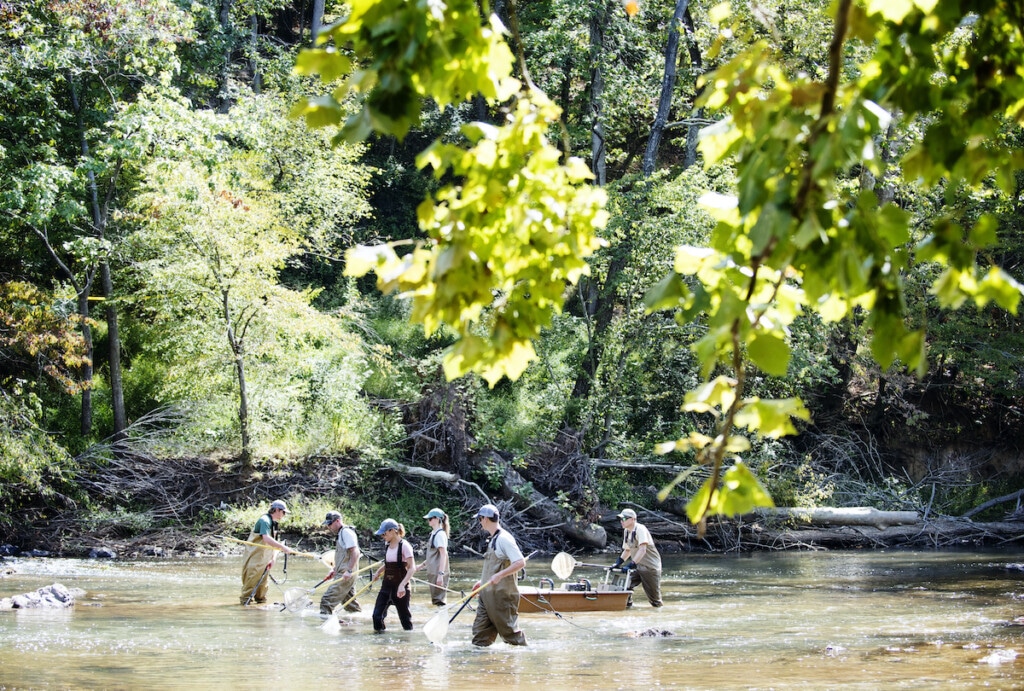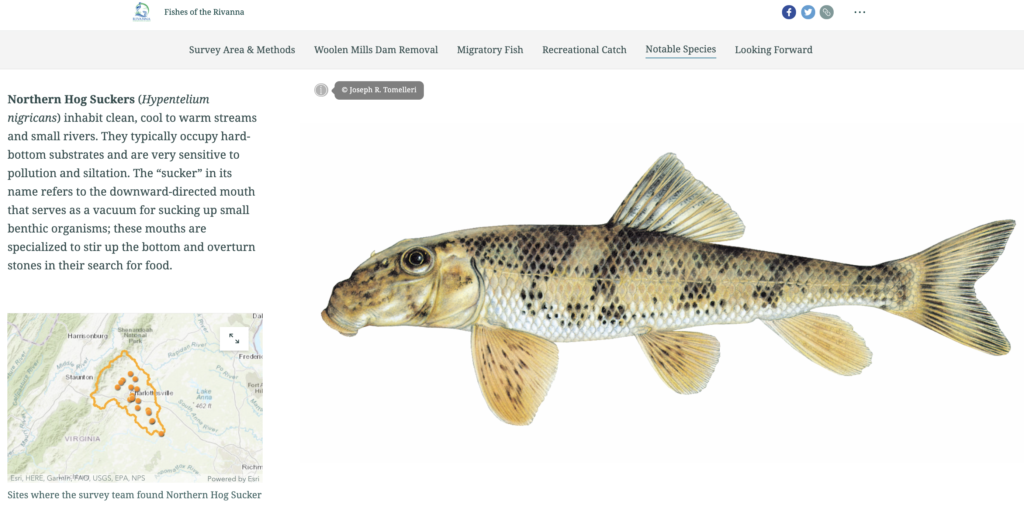
Photo by Ashley Twiggs
Fish Surveys
Fishes of the Rivanna: Surveying a Revived Rivanna River
This interactive ArcGIS StoryMap website presents findings and highlights from RCA’s 2019 Rivanna Fish Survey in a friendly, narrative format. In Fall 2019, RCA carried out this study in collaboration with the Virginia Department of Wildlife Resources and a large group of community volunteers at 24 sites throughout the Rivanna watershed. The StoryMap allows readers to dig into the data from each site or stick with an overview. It shares information about some interesting fish people might catch in the Rivanna, some notable and important species in our watershed, and migratory fish.
Note: You can access the StoryMap on your computer, phone, or tablet but please be sure to use one of the following supported browsers: Google Chrome, Mozilla Firefox, Apple Safari, or Microsoft Edge. Some of the content may take a few moments to load.
Fish Passage
Barrier Assessments
Very few road-stream crossings in the Rivanna watershed have been assessed for their potential hindrance to aquatic organism passage. In 2021 and 2022, RCA will work with the U.S. Fish and Wildlife Service and other partners to conduct a large-scale collection of these baseline assessments. RCA is eager to expand this small inventory, which will ultimately lead to the identification of potential projects that could improve fish passage in the Rivanna watershed.

Barrier Removal
Most work aimed at restoring fish passage and aquatic connectivity in the Rivanna River watershed has centered on dam removal projects. Since the breaching of the Woolen Mills Dam in 2007, at least two other dams (Moores Creek Dam in 2017 and River Run Dam in 2020) have been removed, and several other remaining dams have been assessed and ranked based on the amount of potential benefits gained from passage restoration projects. To learn more about the dams that have been assessed in the Rivanna watershed (and within the larger Chesapeake Bay watershed), check out the Chesapeake Bay Aquatic Barrier Prioritization Tool produced by The Nature Conservancy.

